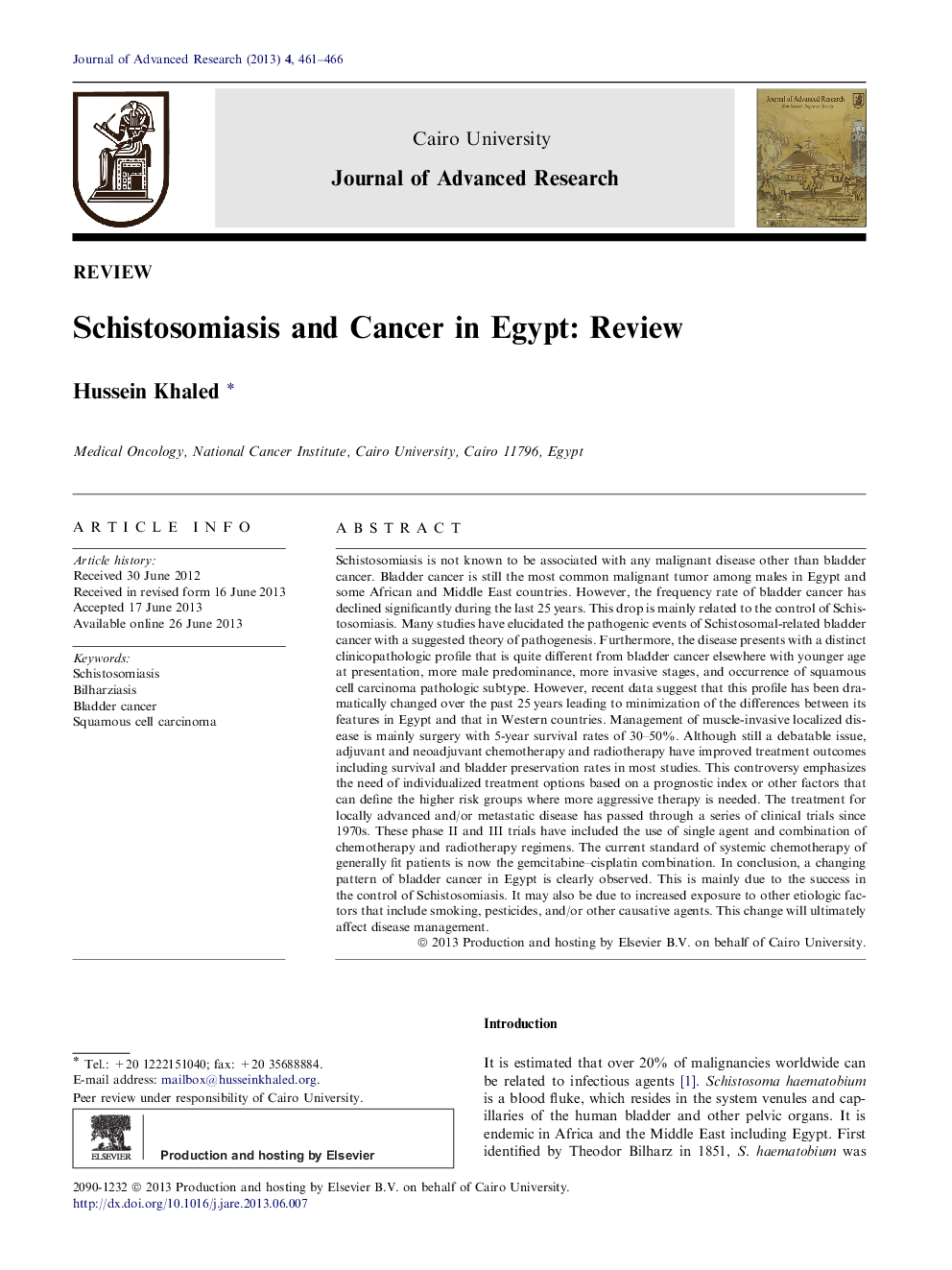| Article ID | Journal | Published Year | Pages | File Type |
|---|---|---|---|---|
| 826220 | Journal of Advanced Research | 2013 | 6 Pages |
Schistosomiasis is not known to be associated with any malignant disease other than bladder cancer. Bladder cancer is still the most common malignant tumor among males in Egypt and some African and Middle East countries. However, the frequency rate of bladder cancer has declined significantly during the last 25 years. This drop is mainly related to the control of Schistosomiasis. Many studies have elucidated the pathogenic events of Schistosomal-related bladder cancer with a suggested theory of pathogenesis. Furthermore, the disease presents with a distinct clinicopathologic profile that is quite different from bladder cancer elsewhere with younger age at presentation, more male predominance, more invasive stages, and occurrence of squamous cell carcinoma pathologic subtype. However, recent data suggest that this profile has been dramatically changed over the past 25 years leading to minimization of the differences between its features in Egypt and that in Western countries. Management of muscle-invasive localized disease is mainly surgery with 5-year survival rates of 30–50%. Although still a debatable issue, adjuvant and neoadjuvant chemotherapy and radiotherapy have improved treatment outcomes including survival and bladder preservation rates in most studies. This controversy emphasizes the need of individualized treatment options based on a prognostic index or other factors that can define the higher risk groups where more aggressive therapy is needed. The treatment for locally advanced and/or metastatic disease has passed through a series of clinical trials since 1970s. These phase II and III trials have included the use of single agent and combination of chemotherapy and radiotherapy regimens. The current standard of systemic chemotherapy of generally fit patients is now the gemcitabine–cisplatin combination. In conclusion, a changing pattern of bladder cancer in Egypt is clearly observed. This is mainly due to the success in the control of Schistosomiasis. It may also be due to increased exposure to other etiologic factors that include smoking, pesticides, and/or other causative agents. This change will ultimately affect disease management.
